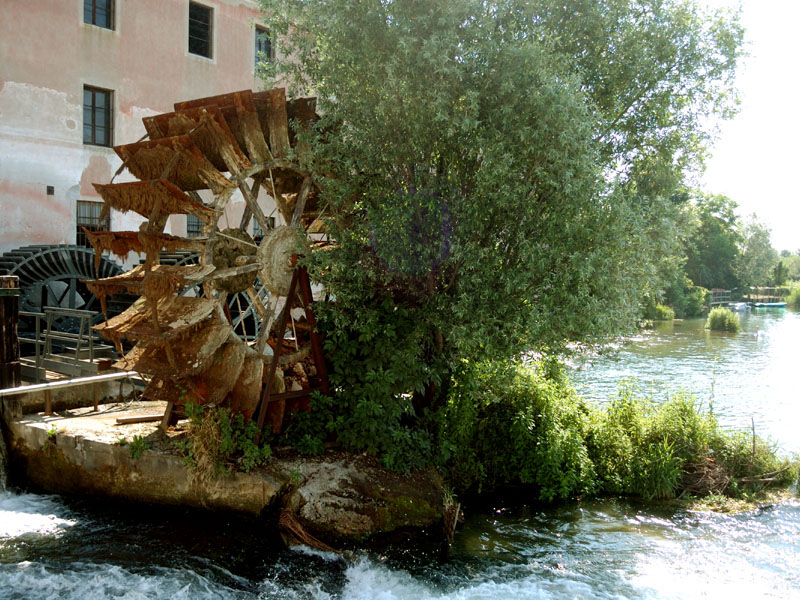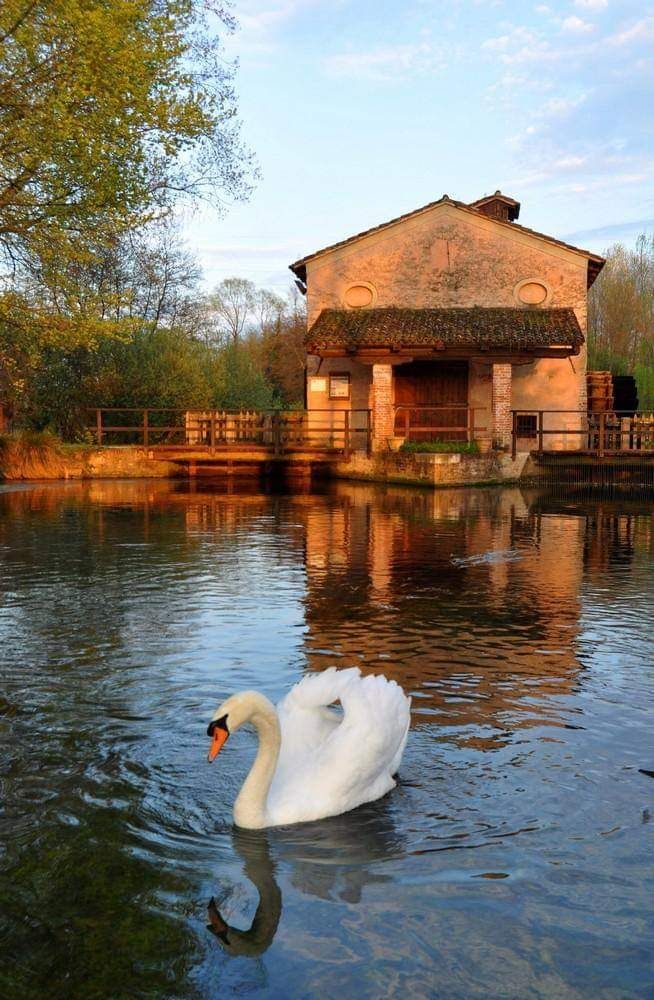I Mulini
 Altro
Altro
Descrizione
Lungo le sponde del Sile, il fiume di risorgiva più lungo d’Europa e dal corso piuttosto regolare, sorsero numerosi esempi di strutture che, già dal Trecento, attestano l’importanza e la vitalità delle campagne di Quinto nel panorama economico del tempo: i mulini.
L’importanza di queste singolari architetture dell’attività molitoria si rivela non soltanto dalla loro frequenza nel territorio, ma anche dalle testimonianze che attestano come la produzione e la macinazione delle farine rispondesse anche alle richieste della vicina Serenissima.
Meraviglioso esempio di questa vitale attività ed in ottimo stato di conservazione è il mulino di Cervara: documentato sin dal 1325, molto attivo in epoca cinquecentesca e soggetto a restauro a fine ‘700, come dimostra l’iscrizione sulla facciata risalente al 1791, il mulino si trova all’interno della splendida riserva naturale dell’Oasi di Cervara che ospita una fauna e flora decisamente singolari.
Davanti alla ruota si conservano gli sportelli con le catene che si avvolgono sul mulinello, a seconda che si volesse chiudere o aprire la ruota, e sopra di essi la passerella per accedere al mulino e alla palude. L’edificio, ora rimaneggiato, era a due piani: in alto il granaio e sotto la sala macchine. Al suo interno si possono ammirare diverse macine di varie epoche nonché alcuni meravigliosi affreschi.
Oltre a questo splendido esemplare di arte molitoria, il territorio di Quinto si costella di numerosi altri mulini, alcuni ben conservati altri non più visibili: tra questi i mulini Bomben, dal nome della famiglia di nobili trevigiani che ne fu proprietaria dal 1486, situati nella parte nord dell’oasi naturalistica ed andati perduti verso il 1909 ed i mulini Grendene, posti vicino alla Chiesa Parrocchiale di San Giorgio, che conobbero fasi di operosità, alternate ad altre di inattività, per poi cadere in disuso e scomparire definitivamente nel 1784.
La struttura è stata ricostruita dopo il 1811 ed attualmente adibita a centro residenziale. Caratteristico il ponticello di legno che attraversa il fiume affianco all’ex mulino e che termina a ridosso dell’altro famoso mulino posto sulla sponda destra del Sile, il Bordignon, che conserva a tutt’oggi il nome del mugnaio che all’inizio del XVIII secolo lo conduceva. La sua attività molitoria è cessata nel 1992, e già a metà del secolo scorso alla potenza dell’acqua era stata affiancata l’energia elettrica.
Altri complessi si conservano nella parte più ad ovest: il mulino Favaro che mantiene, naturalmente inattiva, la suggestiva ruota e che si situa nel punto in cui il Sile si divide in due rami, dando origine ad un’isola ricoperta di vegetazione, e il mulino Rachello, situato sulla sponda opposta, ma ad esso collegato mediante una passerella in legno. Si tratta di un mulino a cilindri ad alta macinazione le cui ruote sono scomparse dopo che nel 1936 sono state sostituite dalla turbina idraulica e nel 1999 da un generatore termoelettrico.
The banks of the Sile, a calm flowing river and the longest in Europe to come from a natural spring, were dotted with many buildings as early as the fourteenth century, evidence of the economic importance and vibrancy of the countryside around Quinto and its mills.
The large number of mills in the area is testimony to the importance of this activity, as well as the fact that the flour they produced was sent to the nearby Venetian Republic for its needs.
One wonderful example of this thriving activity is the Cervara mill, which is still in an excellent state of preservation: mentioned in documents as early as 1325, it was active in the 16th century and underwent restoration at the end of the 18th century, as shown by the inscription on the façade dated 1791. The mill stands in the lovely Cervara nature reserve which is home to some unusual flora and fauna.
In front of the wheel are blocks with chains which were wound around the winch depending on whether the wheel was to be opened or closed, and above them is the walkway to the mill and the marsh. The building originally had two floors: the grain store on the top and the machinery underneath. Inside visitors can admire several mill stones from different ages, as well as some beautiful frescoes.
The area of Quinto is dotted with many more mills, some well-preserved and others that have not survived the ravages of time: one example is the Bomben mills, named after the noble Treviso family who owned them from 1486, which stood to the north of the nature reserve but were lost in 1909. The Grendene mills, built near the parish church of Saint George, had a chequered history, with periods of great activity and then inactivity and abandonment. They eventually fell into disuse and disappeared forever in 1784.
The complex was rebuilt after 1811and is now a residential centre. A wooden bridge, a typical sight, stretches across the river from the former mill to the other famous mill on the right bank of the Sile, the Bordignon. This mill still conserves the name of the miller who used to run it at the beginning of the 18th century. It closed in 1992 after electric power had been added to its waterpower mid-century.
To the west of Quinto are yet more mills: the Favaro mill, with its magnificent wheel which is obviously out of commission, stands at the spot where the River Sile divides into two branches, creating an island covered in vegetation. The Rachello mill, on the opposite bank, is linked to the Favaro mill by a wooden walkway. The mill, which used the high grinding method with cylinders, no longer has its wheels as they were replaced by a hydraulic turbine in 1936 and later in 1999 by a thermoelectric generator.


